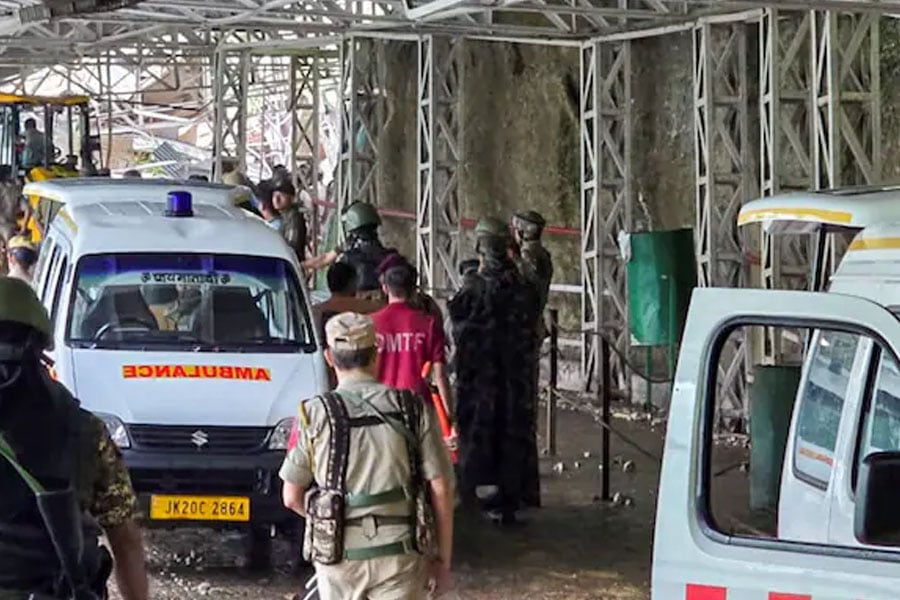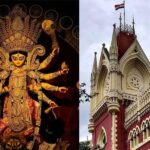The death toll has risen to 31 due to heavy rain and a landslide on the Vaishno Devi route in Katra. 23 people have been injured. It is feared that many people remain trapped under the debris caused by the landslide. Despite heavy rain on Wednesday, rescue operations have begun in full swing. However, it is not just the Vaishno Devi pilgrimage route; the entire Jammu and Kashmir region has been devastated by heavy rainfall.
A major landslide occurred near the Indraprastha Bhojanalaya around noon on Tuesday. Suddenly, rocks and boulders came down the mountainside, causing a stampede among the pilgrims. Numerous pilgrims were buried under the landslide. As a result, it was known yesterday that 9 people had died and 14 were injured. By Wednesday morning, the death toll had risen to 31. It is feared that the number of fatalities may increase further as many people are still believed to be trapped under the debris. The Vaishno Devi Shrine Board has also reported the landslide on its X handle. Due to this incident, the Vaishno Devi pilgrimage has been temporarily suspended.
Read More:
Meanwhile, a cloud of panic has settled over other areas of Jammu and Kashmir. Warnings for heavy to very heavy rainfall were issued on Tuesday for the districts of Kathua, Doda, Jammu, Samba, Ramban, and Kishtwar. Following this, cloudbursts occurred in Doda yesterday. The terrible rain led to flash floods. It is reported that at least four people have died due to the incident. Additionally, many people are missing. Authorities claim that the water level of the Tawi River has risen dangerously.
Read More:
The situation has become so severe that the Jammu-Srinagar National Highway has been closed due to the fear of landslides. Important roads in Doda district have been virtually destroyed. River water levels are flowing above the danger mark. It is feared that the situation could worsen if it rains throughout the night. To avoid risk, the Jammu and Kashmir administration has issued alerts. People are being evacuated from landslide-prone areas. Along with Doda, the situation is serious in Kathua district. There, 155.6 mm of rain has fallen in the last 24 hours. In the Bhaderwah region of Doda, it was 99.8 mm, and in Jammu, it was 81.5 mm. By Tuesday night, at least 3,000 residents had been moved to safety. Rescue operations for those trapped by the landslides are also continuing simultaneously.
Vaishno Devi Yatra route
The Vaishno Devi Yatra is a significant Hindu pilgrimage route in the Trikuta Mountains of Jammu and Kashmir, leading to the holy Vaishno Devi Cave Temple. The journey, traditionally undertaken on foot, is believed to have been followed for centuries by devotees of the goddess Vaishnavi. The pilgrimage’s history is steeped in legend, which tells of the goddess meditating in the cave before vanquishing a demon.
Vaishno Devi
Vaishno Devi is a major Hindu temple dedicated to the goddess Vaishnavi, located in the Trikuta Mountains of Jammu and Kashmir, India. According to legend, the goddess meditated in a cave here over 700 years ago to escape a Bhairo Nath, a tantric who pursued her. It is now one of the most visited pilgrimage sites in the country, attracting millions of devotees each year.
Indraprastha Bhojanalaya
Indraprastha Bhojanalaya is a well-known, long-standing restaurant in Delhi, India, celebrated for its traditional North Indian cuisine. While not a historical monument, its name references the ancient city of Indraprastha, the legendary capital of the Pandavas from the Hindu epic, the Mahabharata. The restaurant evokes this cultural heritage by offering a classic dining experience in a vintage setting.
Vaishno Devi Shrine Board
The Shri Mata Vaishno Devi Shrine Board is a statutory body formed in 1986 by the government of Jammu and Kashmir, India, to manage the affairs of the Vaishno Devi temple, one of Hinduism’s most revered pilgrimage sites. It oversees the infrastructure and facilities for the millions of pilgrims who trek to the cave shrine, which is dedicated to the goddess Vaishno Devi and is believed to have been a place of worship for centuries.
Tawi River
The Tawi River is a vital river flowing through the Jammu region of India, forming the natural and historical boundary of the city of Jammu. It holds significant cultural and religious importance, particularly as the site of the historic Bahu Fort, which has overlooked its banks for centuries.
Jammu-Srinagar National Highway
The Jammu-Srinagar National Highway (NH 44) is a critical 293-km road link in the Indian-administered Jammu and Kashmir, connecting the Jammu region to the Kashmir Valley. Its construction through the difficult terrain of the Pir Panjal mountain range was a major engineering feat, with its history deeply tied to the region’s strategic and economic development. It remains a vital but often perilous route, famous for its steep gradients, sharp curves, and vulnerability to landslides and avalanches.
Jammu and Kashmir
Jammu and Kashmir is a region in northern India, historically a princely state known for its stunning Himalayan landscapes and diverse cultural heritage. It has been a significant center for Buddhism, Hinduism, and later Islam, which arrived in the 14th century. The area’s modern history is marked by its accession to India in 1947 and subsequent geopolitical complexities.
Bhaderwah
Bhaderwah is a scenic town in the Doda district of Jammu and Kashmir, India, often called ‘Chhota Kashmir’ (Little Kashmir) for its natural beauty. Historically, it was a small principality ruled by local Rajput dynasties and later became part of the Jammu kingdom under the Dogra rulers. The area is known for its ancient temples, diverse culture, and a history that blends Hindu and Islamic influences.





